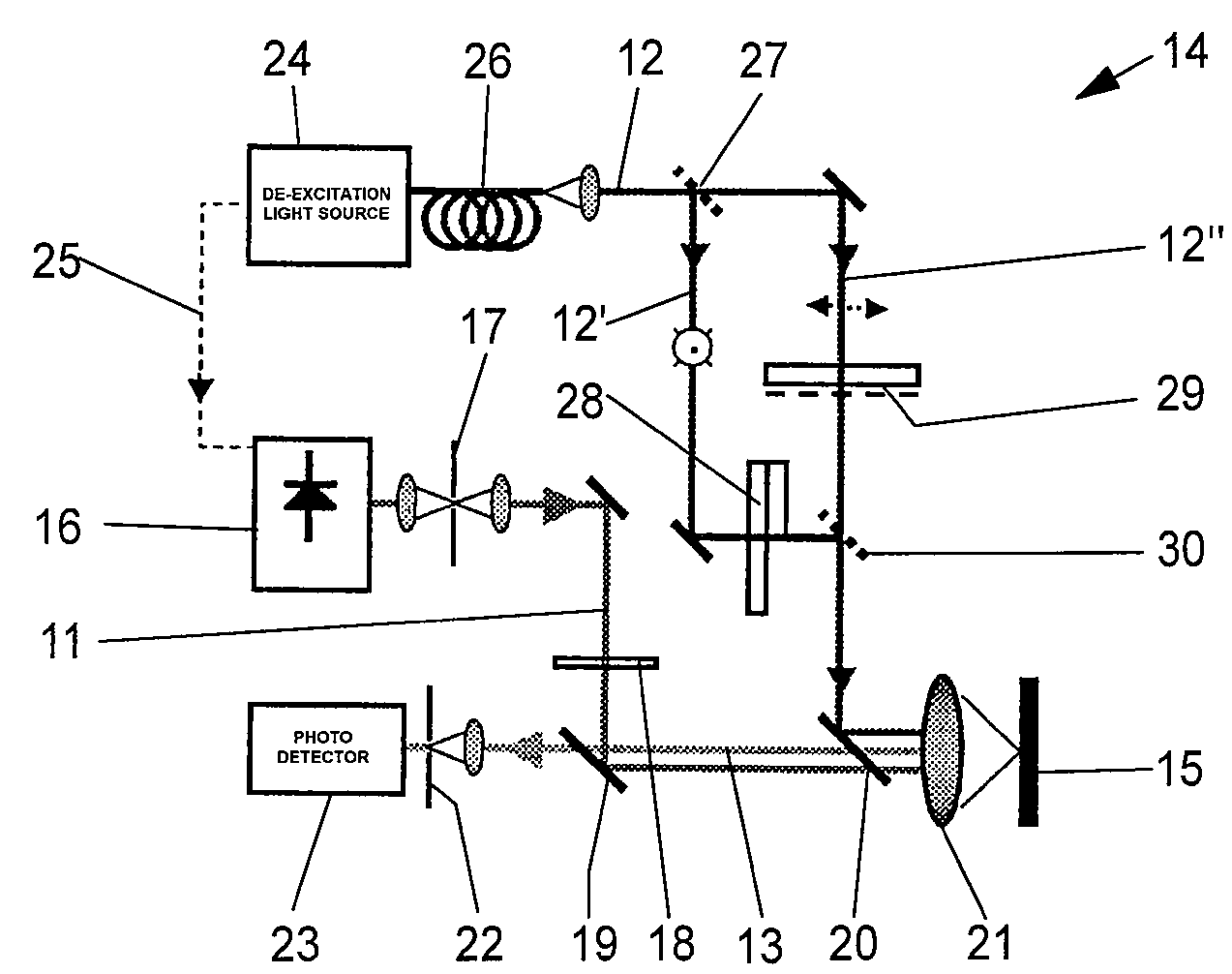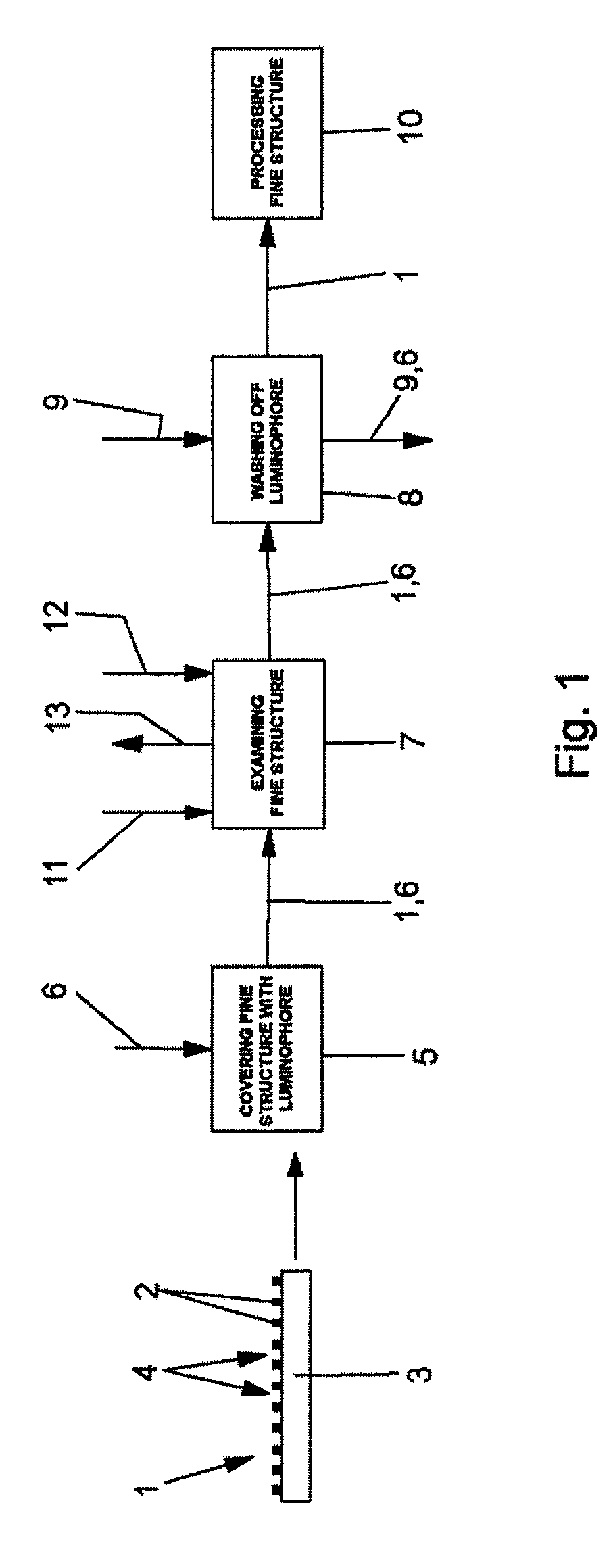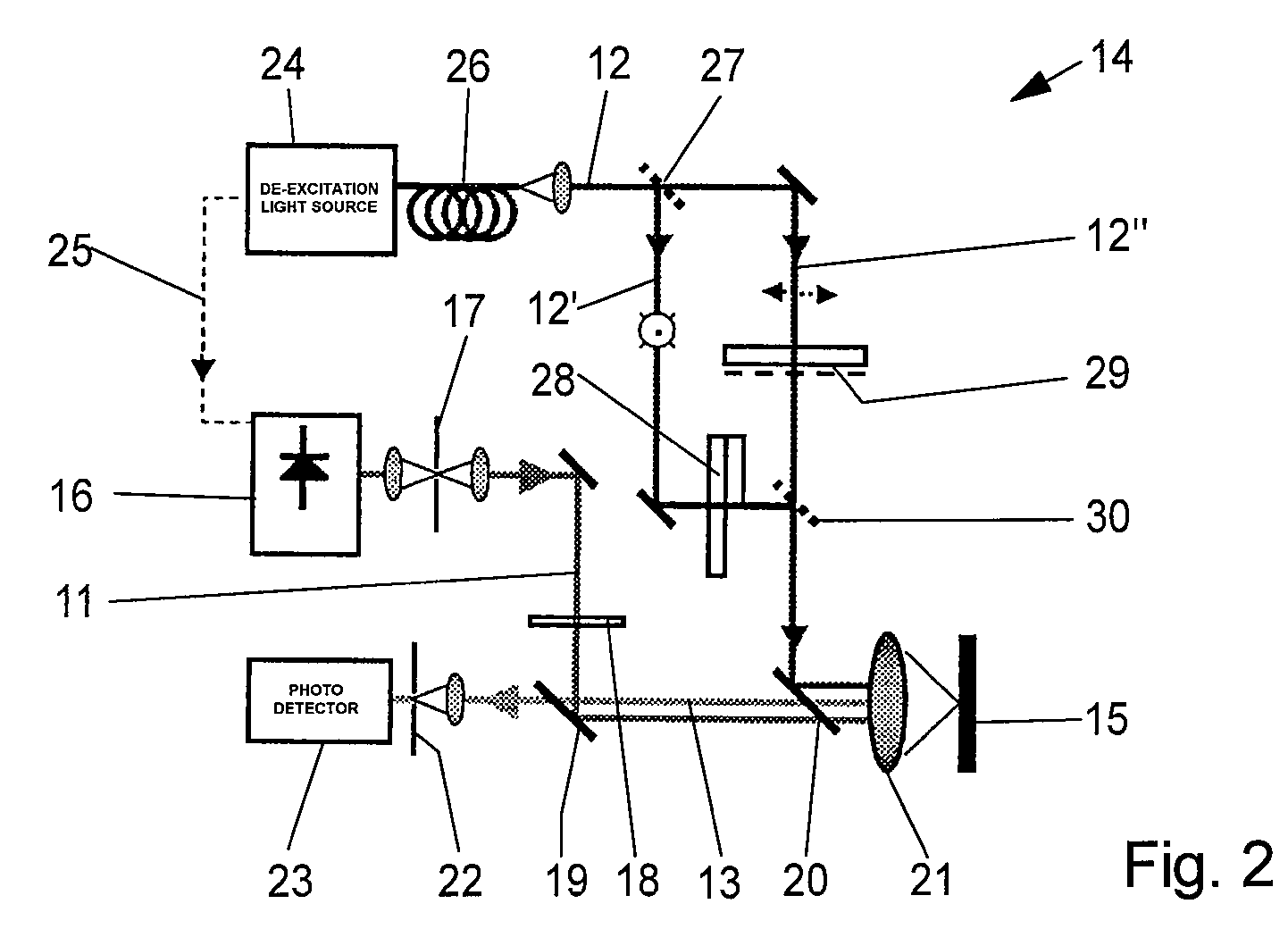Method of microscopically examining a spatial finestructure
a microscopy and fine structure technology, applied in the field of microscopy examining a spatial fine structure, can solve the problems of unable to apply known methods to check, possible to take lost samples, and fine structures which have been examined electron-microscopically have to be discarded, etc., to achieve high spatial resolution and high spatial resolution
- Summary
- Abstract
- Description
- Claims
- Application Information
AI Technical Summary
Benefits of technology
Problems solved by technology
Method used
Image
Examples
Embodiment Construction
[0035]Referring now in greater detail to the drawings, FIG. 1 outlines a method of microscopically examining a spatial fine structure 1, which is indicated as a pattern of line-shaped elevations 2 above a substrate 3. The fine structure 1 can be the result of a lithographic process which is not described in further detail here. In a first method step 5 the surface 4 of the fine structure 1 is overlaid with a luminophore 6 which enables its microscopic examination. To this end, the luminophore 6 is evaporated so that it is uniformly deposited on the surface 4. In a next method step 7, the fine structure 1 covered with the luminophore 6 is microscopically examined. Here, the luminophore 6 which is a fluorescence dye is excited by a beam of excitation light 11 for fluorescence, but de-excitated again by a beam of de-excitation light 12 through stimulated emission except of in the present measurement points of interest. Thus, only fluorescence light 13 which originates from the remainin...
PUM
 Login to View More
Login to View More Abstract
Description
Claims
Application Information
 Login to View More
Login to View More - R&D
- Intellectual Property
- Life Sciences
- Materials
- Tech Scout
- Unparalleled Data Quality
- Higher Quality Content
- 60% Fewer Hallucinations
Browse by: Latest US Patents, China's latest patents, Technical Efficacy Thesaurus, Application Domain, Technology Topic, Popular Technical Reports.
© 2025 PatSnap. All rights reserved.Legal|Privacy policy|Modern Slavery Act Transparency Statement|Sitemap|About US| Contact US: help@patsnap.com



